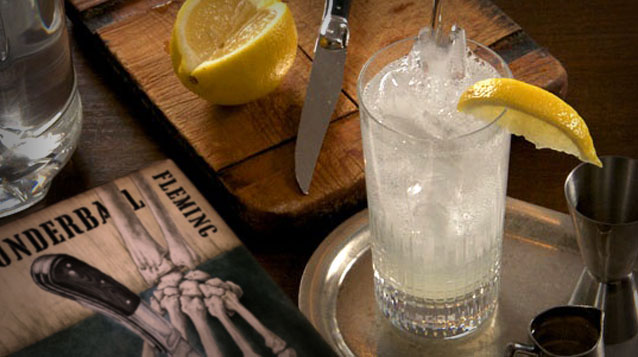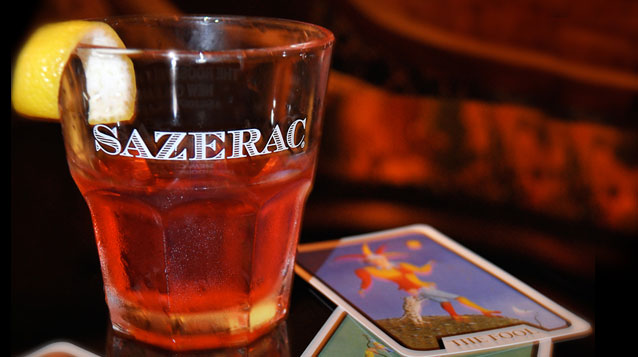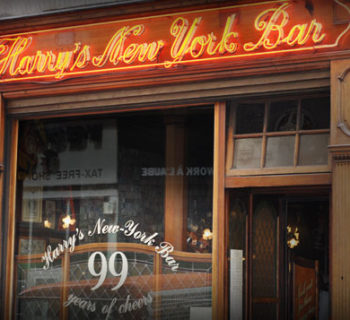THE GOOD LIFE -- Few things can bring the James Bond lifestyle into your home like having a respectable home bar, and being able to create and serve cocktails to suit the setting and mood. In order to transform your amateur setup into a professional level home bar, you’ll need a few good bar tools.
1. Martini Shaker – While I used to avoid the traditional three-piece martini shakers, I recently stumbled across the Oxo Stainless Steel 16-Ounce Cocktail Shaker. This shaker is insulated, making it comfortable to handle, even very cold. The top is magnetized so it stays firmly in place, and its wide-shape allows it to hug the shaker on an angle, making it much easier to remove when it gets cold. The inside of the top can be used to measure out your booze.
2. Shot Glass – In our chapter on Drinks & Mixology, we suggested that one of the first gadgets you should get is a shot glass. Why? The majority of cocktails you’ll get requests for will be traditional one-liquor drinks, such as the Gin & Tonic and Rum & Coke. These cocktails are based on one-ounce of liquor, and to pour a perfect ounce, you’ll need to master the “four-count.” And of course, you can always buy more if you so choose.
3. Jigger – While the speed pour is still the most common practice, the jigger has made a serious comeback in many high-end bars, and is used by bartenders who respect the accuracy of classic drink recipes. A jigger typically measures out 1.5 ounces and .75 ounces, and some will measure out 1 and 2 ounces. These are especially useful for recipes that are given in parts or measures, such as the Vesper.
4. Speed Pourers – These are the little spouts that are placed over the tops of liquor bottles, made of rubber, or metal and plastic. When it comes to speed pourers, the simpler the better. Speed pourers are relatively inexpensive so buy at least one for each liquor bottle, and keep a few extras on hand. And don’t leave the speed pourers on for extended storage. Also, stay away from measured pourers.
5. Bar Spoon – If you plan to offer your martinis “shaken or stirred,” then you’d better have something to stir the cocktail. A bar spoon is a multi-functional tool. It’s extra-long handle reaches the bottom of many tall glasses, and most bar spoon handles are curled for stirring without chipping the ice. The spoon itself is generally for spooning out ingredients (like sugar), but the back of the spoon is also useful in creating layered drinks and shots.
6. Bottle Openers – One of the most obvious, but indispensable bar tools is the bottle opener for opening wine bottles as well as beer bottles, (corks as well as caps). You’ll have a variety to choose from, but I prefer the waiter’s corkscrew, which looks more like a pocketknife. This traditional corkscrew is inexpensive, and has a blade for cutting the seal or foil around the neck of the wine bottle, as well as a built-in opener for beer bottles.
7. Cutting Board and Knife – While most kitchens will already have these basic tools, it’s useful to have a dedicated cutting board and knife to cut up your fruits and garnishes. You can always cut up fruit in advance, but if your evening is going at a casual pace, you can just keep fresh fruit handy, and a cutting board and knife nearby so you can cut your fruit as you’re making and garnishing your drinks.
8. Muddler – Ever since the explosion of the Mojito, the muddler has become an essential piece of bar equipment. A muddler is inexpensive, and typically comes in wood or stainless steel, and looks like nothing more than a mini baseball bat, and it’s used to crush or “muddle” ingredients like mint leaves, limes, sugar, and cherries, for cocktails like the Mojito, the Mint Julep, the Caipirinha and the Old-fashioned.
9. Juicer – If you are planning to avoid the store-bought sour mix, then you’ll need fresh citrus juice, and you can’t get any fresher than using a juicer to extract the juice from lemons and limes. They come in all sizes, including electric juicers, but I find that a handheld juicers to be perfect for making single cocktails that use citrus juice, such as a Collins.
10. Juice Pourers – When you are dealing with speed and volume, you could always purchase juice pourers. Commonly called ‘Store ‘n Pour’, these might be something that you pick up later as you start to build your bar setup. Be sure to get the ones that are the one-quart containers and have the different color-coded lids, so you always know what’s inside.
11. Ice Bucket and Scoop – Of course, you will need something to handle your ice. An ice bucket will work fine to keep your ice cold and insulated, but will probably need to be refilled regularly, which means you will need some extra ice on hand, so make room in the freezer. Ice tongs are popular with ice buckets for placing ice into glasses, but unless you feel like dropping one ice cube at a time, go with a medium-sized ice scoop.
12. Bar Towel – The last of the bar tools that every bartender should keep on hand is a good bar towel. You won’t see a bartender polishing glasses, or wiping down a bar, with a paper towel. You don’t want tiny little shards of paper towel getting into your glasses, so keep a good fabric bar towel handy to keep your area neat and also keep your glasses polished.











Top 5 Rejected James Bond Theme Songs
The "No Time To Die" Review